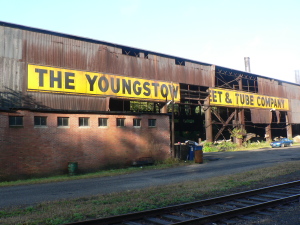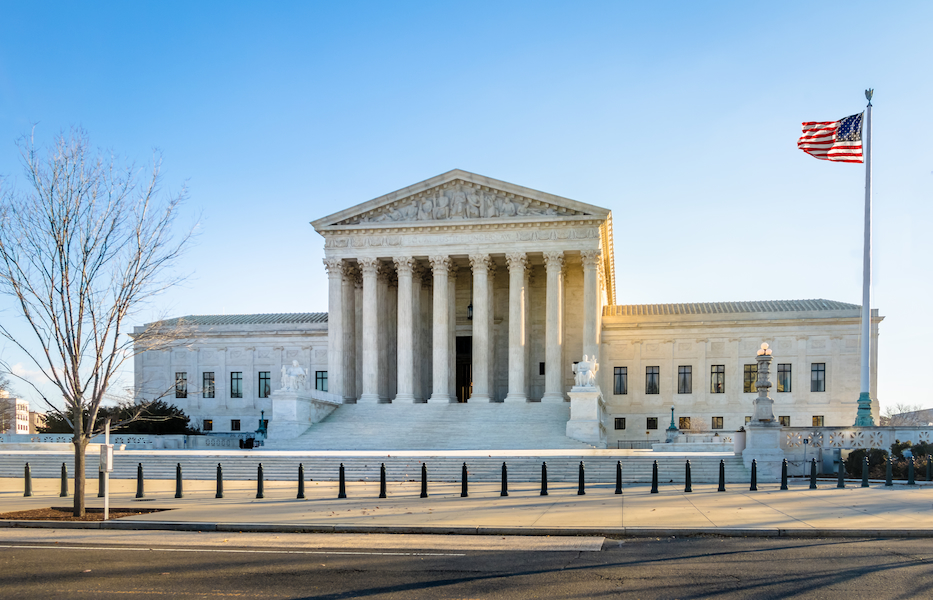Youngstown Sheet and Tube Co. v. Sawyer: The President’s Executive Power

Presidents from George Washington to Barack Obama have issued executive orders to help facilitate the management of the country. Because such actions are often not expressly authorized by statute, but rather derived from the President’s executive power under the U.S. Constitution, they are subject to legal challenge. In Youngstown Sheet and Tube Co. v. Sawyer, the U.S. Supreme Court held that President Harry Truman exceeded his authority when he seized the country’s steel mills to resolve a labor dispute.
The Facts of the Case
In response to a threatened nation-wide strike of steel workers in April 1952, President Harry Truman issued an Executive Order directing the Secretary of Commerce to seize and operate the majority of the nation’s steel mills. The Order was not predicated upon any specific statutory authority but was based generally upon all powers vested in the President by the U.S. Constitution and as Commander in Chief of the Armed Forces.
The Secretary issued an order seizing the steel mills and directing their presidents to operate them as operating managers for the federal government. While President Truman urged Congress to take action, it refused to authorize governmental seizures of property to settle labor disputes. In response to the seizure, the steel companies filed suit, alleging that the President had exceeded his powers in issuing the executive order.
The Legal Background
Under Article II, section 1 of the U.S. Constitution, “The executive power shall be vested in a president of the United States of America.” Article II, section 3 further states that, “The President shall take care that the laws be faithfully executed…” Although the provisions do not expressly grant the president the power to make executive orders, the authority is thought to derive from his the aggregate of his powers under the Constitution.
The Court’s Decision
By a vote of six to three, the Supreme Court vacated the executive order. It concluded that the President did not have the constitutional or statutory authority to seize the nation’s steel mills. “The President’s power to see that the laws are faithfully executed refutes the idea that he is to be a lawmaker,” Justice Hugo L. Black wrote.
While Justice Black took a hardline approach, concluding that the president’s authority must stem either from an act of Congress or from the Constitution itself, Justice Robert Jackson’s concurrence adopted a more flexible approach. It is also more frequently cited in executive power jurisprudence.
According to Justice Jackson, presidential authority can be broken down into three categories:
- When the President acts pursuant to an express or implied authorization of Congress, his authority is at its maximum, for it includes all that he possesses in his own right plus all that Congress can delegate.
- When the President acts in absence of either a congressional grant or denial of authority, he can only rely upon his own independent powers, but there is a zone of twilight in which he and Congress may have concurrent authority, or in which its distribution is uncertain.
- When the President takes measures incompatible with the expressed or implied will of Congress, his power is at its lowest ebb, for then he can rely only upon his own constitutional powers minus any constitutional powers of Congress over the matter.
Using this framework, Justice Jackson ultimately concluded, “The executive action we have here originates in the individual will of the President and represents an exercise of authority without law.”
Previous Articles
SCOTUS Wraps Up Oral Arguments for the Term
by DONALD SCARINCI on May 17, 2022
The U.S. Supreme Court has concluded its oral arguments for the October 2021 Term. The justices hea...
SCOTUS Rules Censure of Elected Board Member Didn’t Violate First Amendment
by DONALD SCARINCI on May 10, 2022
In Houston Community College System v. Wilson, 595 U.S. ____ (2022), the U.S. Supreme Court held th...
Supreme Court Breach Is Not the First Involving Roe v. Wade
by DONALD SCARINCI on
The recent disclosure of Justice Samuel Alito’s decision purporting to overturn Roe v. Wade is ar...
The Amendments
-
Amendment1
- Establishment ClauseFree Exercise Clause
- Freedom of Speech
- Freedoms of Press
- Freedom of Assembly, and Petitition
-
Amendment2
- The Right to Bear Arms
-
Amendment4
- Unreasonable Searches and Seizures
-
Amendment5
- Due Process
- Eminent Domain
- Rights of Criminal Defendants
Preamble to the Bill of Rights
Congress of the United States begun and held at the City of New-York, on Wednesday the fourth of March, one thousand seven hundred and eighty nine.
THE Conventions of a number of the States, having at the time of their adopting the Constitution, expressed a desire, in order to prevent misconstruction or abuse of its powers, that further declaratory and restrictive clauses should be added: And as extending the ground of public confidence in the Government, will best ensure the beneficent ends of its institution.




